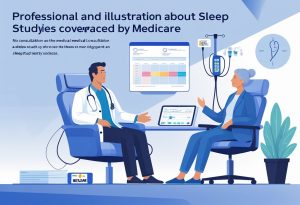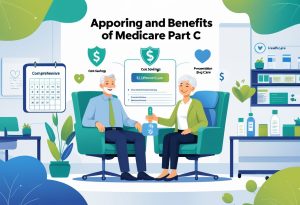Navigating Medicare can be complex, especially when you’re considering a switch from Medicare Advantage to Original Medicare. You can transition from a Medicare Advantage plan to Original Medicare during specific enrollment periods, providing you the flexibility to adjust your coverage according to your needs. This option allows you to tailor your healthcare choices better if your current plan does not meet your expectations.
Many individuals find themselves reassessing their Medicare plans after experiencing changes in health, finances, or personal preferences. The Modern Medicare Agency understands the challenges involved in choosing the right coverage. Our licensed agents offer personalized assistance, working with you one-on-one to identify Medicare packages that suit your requirements without incurring extra fees.
Making an informed switch is essential for your health and financial well-being. Whether you seek to return to Original Medicare or explore other options, The Modern Medicare Agency is here to guide you through each step of the process. With accessible support and expert advice, you’ll find the right Medicare solution tailored just for you.
Eligibility and Reasons for Switching From Medicare Advantage to Original Medicare
Understanding eligibility criteria and reasons to switch from Medicare Advantage to Original Medicare can help you make informed decisions about your healthcare coverage. Several key factors determine when and why you may want to initiate this change, largely centered on personal circumstances and plan specifics.
Qualifying Life Events and Enrollment Periods
Life events can trigger eligibility for a switch to Original Medicare. These include changes such as moving to a new address, becoming eligible for Medicaid, or other significant health changes.
During these transitions, you may qualify for a Special Enrollment Period (SEP). SEPs allow you to switch plans outside the usual enrollment windows, like from January 1 to March 31 or October 15 to December 7 for regular open enrollment.
These periods are critical for maintaining coverage without risking penalties or gaps in care. Understanding your circumstance helps in making the change seamlessly.
Mistaken or Misleading Enrollments
Sometimes beneficiaries are enrolled in Medicare Advantage by mistake or based on misleading information. This could happen when individuals don’t fully understand their options or are misinformed about the coverage details.
If you find yourself in a plan that doesn’t meet your needs, switching back to Original Medicare is a viable option. You can access care providers outside restricted networks, providing greater flexibility.
The Modern Medicare Agency can assist you in identifying if mistaken enrollments occurred and guide you in correcting your plan to align with your health requirements.
Coverage Limitations and Plan Networks
Medicare Advantage plans often have restricted provider networks, which can limit your choice of doctors and hospitals. If your healthcare needs require a broader network or specialized care, it may be more beneficial to switch to Original Medicare.
Original Medicare generally allows more freedom with providers, enabling you to see any doctor or specialist who accepts Medicare. This flexibility is significant for those needing continuous or specialized health services.
With The Modern Medicare Agency, our licensed agents work with you to evaluate your coverage needs, ensuring you find the right fit without hidden fees. Having access to the right information can make all the difference in optimizing your Medicare coverage.
Understanding Medicare Advantage Versus Original Medicare
Navigating the differences between Medicare Advantage and Original Medicare can significantly impact your healthcare choices. Understanding how each option works, along with their features, will help you make informed decisions about your coverage.
How Medicare Advantage Plans Work
Medicare Advantage, also known as Medicare Part C, is a type of health plan offered by private companies that contract with Medicare. These plans provide all your Part A (hospital insurance) and Part B (medical insurance) coverage. Most Medicare Advantage plans are structured as managed care plans, including Health Maintenance Organizations (HMOs) and Preferred Provider Organizations (PPOs).
You typically need to use in-network doctors and hospitals to maximize your benefits. Many plans also include additional services such as vision and dental coverage, a significant advantage over Original Medicare. You usually pay a monthly premium, along with deductibles, copayments, and coinsurance.
Features of Original Medicare
Original Medicare consists of two parts: Part A and Part B. Part A covers inpatient hospital stays, skilled nursing facility care, hospice, and some home health care. Part B covers outpatient services, preventive care, and medically necessary services.
While Original Medicare provides flexibility to choose any doctor or hospital that accepts Medicare, it does not include coverage for prescription drugs, vision, or dental services. You can obtain prescription drug coverage through a separate Part D plan. Many beneficiaries appreciate the straightforward structure of Original Medicare, but it may not cover all healthcare needs.
Common Types of Medicare Advantage Plans
Medicare Advantage plans come in various types, each designed to cater to different healthcare needs. The most common types include:
- Health Maintenance Organizations (HMOs): Require members to select a primary care physician and get referrals for specialists.
- Preferred Provider Organizations (PPOs): Offer more flexibility in choosing providers, allowing you to see out-of-network doctors at a higher cost.
- Private Fee-for-Service (PFFS): Let you visit any Medicare-approved provider who agrees to the plan’s terms.
- Special Needs Plans (SNPs): Tailored for individuals with specific health needs or conditions.
- Medicare Medical Savings Accounts (MSAs): Combine a high-deductible health plan with a medical savings account.
Choosing the right plan can be complex. The Modern Medicare Agency offers personalized assistance, connecting you with licensed agents who understand your specific needs. You can find Medicare packages tailored to your situation without incurring extra fees that can strain your budget.
Steps to Switch From Medicare Advantage to Original Medicare
Switching from Medicare Advantage to Original Medicare involves specific processes and considerations. Understanding the disenrollment process, the role of retroactive disenrollment, and how to avoid gaps in Medicare coverage is essential for a smooth transition.
Disenrollment Process
To initiate the switch, you need to formally disenroll from your Medicare Advantage plan. This can typically be done during designated enrollment periods. You can choose to switch during the Medicare Open Enrollment Period, which runs from October 15 to December 7, or the Medicare Advantage Open Enrollment Period from January 1 to March 31.
Upon disenrolling, ensure you have selected a new plan or revert to Original Medicare. You can do this through the Social Security Administration or by contacting a licensed agent at The Modern Medicare Agency. Our agents provide personalized assistance to ensure you make informed choices.
Role of Retroactive Disenrollment
Retroactive disenrollment may occur depending on when you request to switch back to Original Medicare. If you qualify for a Special Enrollment Period, you might not have to wait for the regular enrollment periods to disenroll and switch.
When you successfully disenroll, Medicare will retroactively process your coverage, allowing you to access Original Medicare benefits. This can help avoid any coverage disruptions, ensuring continuous access to necessary services.
Avoiding Gaps in Medicare Coverage
To prevent gaps in coverage during the switch, plan your transition carefully. Ideally, request disenrollment and enrollment in Original Medicare simultaneously, ensuring no lapse in benefits. If enrolled in a Medicare plan for prescription drugs, make sure to enroll in a separate Part D plan if needed.
Consider reaching out to The Modern Medicare Agency for guidance in navigating the complexities of this process. Our knowledgeable agents help you identify right coverage options without hidden fees, ensuring your choices align with your healthcare needs.
Prescription Drug Coverage and Medigap After Switching
Understanding your options for prescription drug coverage and Medigap after switching from Medicare Advantage to Original Medicare is crucial. This section will outline how you can secure adequate coverage for your medications and the role Medigap plays in this transition.
Enrolling in a Stand-Alone Part D Plan
Once you switch to Original Medicare, you will need to consider enrolling in a stand-alone Medicare Part D plan for prescription drug coverage. This coverage is not automatically included when you have Original Medicare, unlike some Medicare Advantage plans.
To enroll, you typically have to act within the Medicare open enrollment period, which runs from October 15 to December 7 each year. You may also qualify for a special enrollment period under certain conditions.
Make sure to compare various Part D plans based on their formularies, premiums, and out-of-pocket costs. Choosing the right plan can significantly affect your overall healthcare expenses.
Medigap Policies With Original Medicare
After switching to Original Medicare, you can also consider purchasing a Medigap policy. Medigap plans help cover the out-of-pocket costs that Original Medicare doesn’t pay, including copayments, coinsurance, and deductibles.
These policies are sold by private insurance companies and can offer various levels of coverage. It’s important to choose a plan that meets your healthcare needs and budget.
Remember, you can typically enroll in a Medigap policy within six months after you first enroll in Medicare Part B. During this timeframe, you have guaranteed issue rights, meaning insurers cannot deny you coverage based on pre-existing conditions.
Coverage Differences for Prescription Drugs
When switching from Medicare Advantage to Original Medicare, be aware of potential differences in prescription drug coverage. Medicare Advantage plans often include built-in drug coverage, while Original Medicare requires you to enroll separately in Medicare Part D.
Coverage levels may vary between plans. Therefore, check which medications are covered under different Part D plans. Some plans may impose restrictions or higher costs for specific prescriptions, so understanding these nuances is key.
The Modern Medicare Agency can assist you in evaluating the best fit for your needs. Our licensed agents will help you find the right Part D plan without extra fees, ensuring you have an optimal choice tailored for your prescription drug needs.
Potential Challenges and Considerations When Switching
Switching from Medicare Advantage to Original Medicare involves important considerations that can affect your overall healthcare experience. Understanding the enrollment timelines, provider access, and potential out-of-pocket costs is crucial to making an informed decision.
Enrollment Timelines and Penalties
Timing is critical when changing your Medicare coverage. You can switch during specific periods: the Medicare Open Enrollment Period from October 15 to December 7, or the Medicare Advantage Open Enrollment Period from January 1 to March 31. Missing these windows may lead to waiting another year before you can make the change.
Additionally, there are no penalties for switching, but late enrollment in Part D, the prescription drug plan under Original Medicare, could incur a penalty. Be sure to inform yourself about these timelines to avoid any gaps in coverage that could lead to unexpected costs. The Modern Medicare Agency can assist you in navigating these complex timelines with ease.
Provider Access and Networks
Access to healthcare providers differs significantly between plans. Original Medicare offers nationwide access to any doctor or hospital that accepts Medicare, while Medicare Advantage plans typically operate within specific networks. This could limit your choices.
If you have established relationships with certain providers under your Advantage plan, you may need to verify whether they accept Original Medicare. Additionally, if you require specialists or specific treatments, confirm that these providers are available under Original Medicare’s guidelines. Working with The Modern Medicare Agency ensures you can find a plan that meets your needs without compromising provider access.
Impact on Out-of-Pocket Costs
Switching from Medicare Advantage to Original Medicare can affect your out-of-pocket expenses. Generally, Original Medicare has premiums, deductibles, and coinsurance that need to be considered. For example, while you may face a deductible for hospital stays, there may not be an out-of-pocket maximum, unlike some Medicare Advantage plans.
In addition, consider if you’ll want a Medigap policy to help cover gaps in coverage. While Medigap can provide more predictable expenses, premiums vary. Evaluating these financial implications is key to ensuring that your choice aligns with your budget. The Modern Medicare Agency can help identify the best cost-effective options tailored to your situation.
Frequently Asked Questions
This section addresses common queries regarding the transition from Medicare Advantage to Original Medicare. Understanding penalties, enrollment periods, and considerations can help you make an informed choice about your coverage options.
Is there a penalty for switching from Medicare Advantage to Original Medicare?
Generally, there is no penalty for switching from Medicare Advantage to Original Medicare during the specified enrollment periods. However, if you wait until the general enrollment period and do not have other creditable coverage, you might face late enrollment penalties for Medicare Part B.
How often are you allowed to switch from Medicare Advantage to Original Medicare?
You can typically switch from Medicare Advantage to Original Medicare once a year during the Open Enrollment Period. Additionally, if you are within your first year of enrollment in a Medicare Advantage plan, you may be eligible for a trial right that allows you to switch back without penalty.
Can you change from Medicare Advantage to Original Medicare during the Open Enrollment Period?
Yes, from January 1 to March 31 each year, you can change from Medicare Advantage to Original Medicare during the Medicare Advantage Open Enrollment Period. You can also switch back during the Annual Enrollment Period from October 15 to December 7.
What should one consider when deciding to switch from Medicare Advantage to Original Medicare?
When considering a switch, evaluate your healthcare needs, provider options, and potential out-of-pocket costs. It’s also wise to check whether you need a separate prescription drug plan or if you require additional coverage like Medigap once you switch back to Original Medicare.
What are the enrollment periods that permit changing from Medicare Advantage to Original Medicare?
You can change from Medicare Advantage to Original Medicare during the Medicare Advantage Open Enrollment Period (January 1 to March 31) and the Annual Enrollment Period (October 15 to December 7). Additionally, if you qualify for a Special Enrollment Period due to specific circumstances, you can also make the change.
Is it possible to switch from a Medicare Advantage plan to a Medicare Supplement plan without medical underwriting?
In most cases, you can switch from Medicare Advantage to a Medicare Supplement plan without medical underwriting if you do so during a guaranteed issue right period. This usually occurs when you first enroll in Medicare or when you switch back to Original Medicare from a Medicare Advantage plan.






